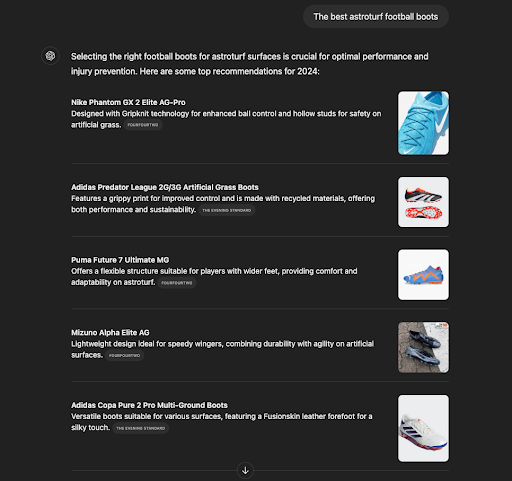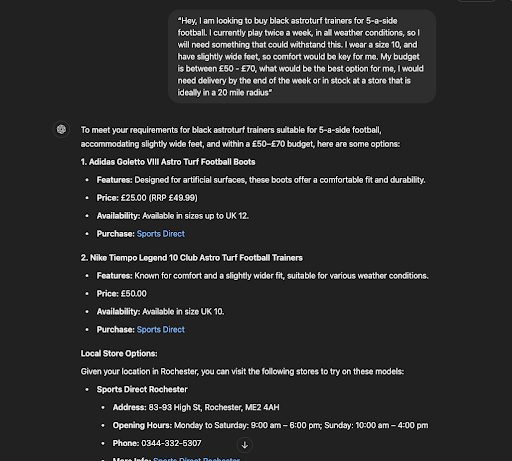The search landscape is certainly evolving at a rapid pace as we embark on the future with AI-assisted search. In the past 12 months we’ve seen:
- The introduction of AI overviews and more recently, paid ads in AI overviews.
- Generative AI search engines such as Perplexity have entered the frame, providing useful summaries and citations from publishers that help answer user queries.
- Open AI announced SearchGPT, which is something the SEO world is looking forward to exploring.
- Visual search gaining momentum with Google Lens.
- The advent of Apple intelligence promises to transform our smartphones into even smarter devices.
- Google’s dominance under threat. Their anti-trust lawsuit with the DOJ is threatening to disrupt the search world like never before.
- Voice search, which promised to be a game changer over 10 years ago, is not quite the revolution we were braced for.
These developments indicate that the era of just 10 blue clicks, which dominated our perception of search since I can remember, may well and truly be over. But what does the future of search hold?
Changing User Search Patterns and Behaviours
Remember a time when brands and webmasters believed that their websites had to be short in length because “people don’t scroll”? People now spend an average of 2 hours 23 minutes a day scrolling. How the world has changed!
Large Language Models (LLMs) like GPT have the potential to impact behaviour in a similar way. I believe that the more LLMs are integrated into our daily lives, the more we will shift from traditional search query inputs to more prompt based searches. Prompt searching could be the new scroll.
For example, a traditional search might look something like this:
“The best astroturf football boots”

A prompt based search could look like this:
“Hey, I am looking to buy black astroturf trainers for 5-a-side football. I currently play twice a week, in all weather conditions, so I will need something that could withstand this. I wear a size 10, and have slightly wide feet, so comfort would be key for me. My budget is between £50 – £70, what would be the best option for me, I would need delivery by the end of the week or in stock at a store that is ideally in a 20 mile radius”

The key difference between these two inputs is that conversational searching allows users to be specific, provide context and seek clarity through use of natural, conversational language. I believe that it will be an inherent behaviour in how we communicate and interact with search moving forwards.
Another user behaviour change driver is the ability to adopt multimodal search capabilities, through voice, text and image inputs. This advancement enables users to search using various forms of input beyond traditional text queries, making search more intuitive and aligned with natural human communication methods. This results in users expecting more personalised, immediate and contextually relevant results.
Cognitive Augmented Search
What we are experiencing now with AI Overviews, LLM Search Engine capabilities, Multi Model searching, Conversational and natural forms of interaction with search are essentially key milestones in our journey towards ‘cognitive augmented search’.
For the Marvel fans amongst us, an easy parallel to the ‘cognitive augmented search’ experience is Stark’s JARVIS. The main difference being that ‘cognitive augmented search’ will enable AI assistants for the masses, not just the elite.
We’re expecting technology and human cognition to merge, creating more intuitive, personalised, and immersive experiences. Search will no longer be a distinct action but an integrated omnipresent aspect of how we perceive and interact with the world.
Search will seamlessly integrate with our thoughts and surroundings, providing personalised, context-aware information that augments our natural abilities. This evolution will transform search from a tool we use, into an integral extension of ourselves. Providing us with an enhanced understanding of the world, enabling us to navigate information as effortlessly as we breathe.
Whilst this may seem like science-fiction to many, what we’re seeing points towards it becoming science-fact.
